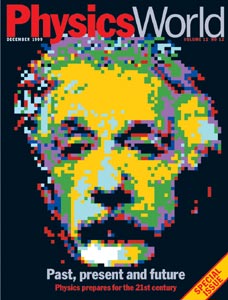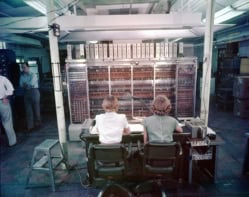Surveys routinely reveal that Physics World readers enjoy articles about the history of physics and would like more of the same. Such articles are popular, I assume, because they are easier to understand than articles about the cutting edge of research. As Enrico Fermi once said: “Never underestimate the joy people derive from hearing something they already know.” Such articles are also enjoyable because many of the personalities appear larger than life. Of course, a paper in a history of science journal would never celebrate the achievements of a physicist in the same way that Physics World would, but that is one of the many differences between journals, which are intended to be learned, and magazines, which should be popular.
Articles about history also appeal because they provide the opportunity to explore wrong turns and give credit to those whose work has been overlooked. In a standard feature article, on the other hand, the author might write that Einstein developed the special theory of relativity in 1905. This potted history is true, of course, but it overlooks the contributions of Poincaré and Lorentz. However, if every article had to give full credit for every advance in the history of physics, there would be little room for what is going on today.
A curious example of a wrong turn in the early days of nuclear physics is described by Jeff Hughes in “Occultism and the atom” (pages 31-35). Hughes relates how the popular history of the discovery of isotopes completely overlooks how Francis Aston initially used the name “meta-neon” to describe the new form of neon that he had observed. Aston – who went on to receive the Nobel Prize for Chemistry in 1922 – took the name from a book written by two “occult chemists” who claimed to be able to see inside atoms using a form of clairvoyance.
Interest in the history of physics looks set to increase in the near future with the science community – and maybe even the world at large – preparing to celebrate the 100th anniversary of Einstein’s first papers on special relativity, the photoelectric effect and the existence of atoms in 2005. Meanwhile, books about Newton (by Patricia Fara and James Gleick, for instance) continue to be widely reviewed, and Einstein’s Clocks, Poincaré’s Maps by Peter Galison is also making headlines. Should physicists be worried that these books are being written by journalists and historians, rather than physicists, and that they may be questioning many of the “facts” that we hold dear? The answer to this question is no. First, some historians of science have formidable backgrounds in physics. And second, as Sheldon Glashow, the Nobel-prize-winning theorist, once told a conference on the history of particle physics: “Beware! We can no more be our own historians than actors can be their own critics.”




